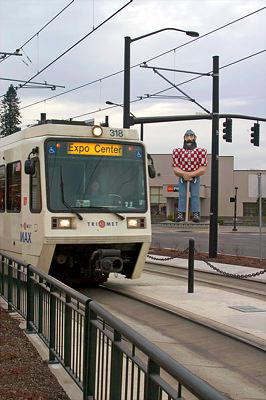No Light Rail in Vancouver!
Rail, Energy, & CO2: Part 4 — Construction

Let’s say you want to build a rail line and you are convinced, despite all the evidence in my previous posts, that operating it will use less energy per passenger mile than buses or cars. Before you start construction, first ask: How much energy will it take to build the rail line?
Sound Transit, which is building one of the most expensive light-
That estimate is based on the “generous assumption” that half the energy needed for construction will come from hydroelectric power. I am not that generous. All hydroelectric power in the Northwest is fully committed to existing energy uses. Besides, electricity is not a significant power source for major construction projects. New energy demands, such as that needed to build a rail line, must come from other sources — sources that will emit thousands of tons of CO2.
Either way, rail lines must be virtually rebuilt from the ground up, requiring a great deal of energy, every 30 years or so. If the energy used to build the line costs more than 30 years worth of your savings, you aren’t saving energy at all. (Highway construction requires energy as well, but because roads are so much more heavily used than rail lines, the energy cost of highway construction per passenger mile is very low.)

Portland’s Interstate Avenue light-
Flickr photo by ahockley.
The environmental impact statement for Portland’s North Interstate light rail estimated that the line would save about 23 billion BTUs per year, but that construction would cost 3.9 trillion BTUs. Thus, it would take 172 years for the savings to repay the construction cost. Remember, since more energy will be needed to rebuild the line every 30 years or so, the energy cost of construction will never be made up for by operational savings. Plus,
we know that when this line opened in 2004, light-
In Denver, the environmental impact statement for the West light-
Unfortunately, some transit planners have neglected to include the energy costs of
construction in their supposedly comprehensive environmental impact statements. I
can’t find any mention of energy in the table of contents for a light-
In sum, any claims that rail transit will reduce energy consumption must be met with skepticism unless they are accompanied by evidence that the operational savings will quickly repay the construction cost.
1
Trackback • Posted in Transportation
Reprinted from The Antiplanner